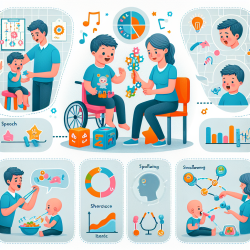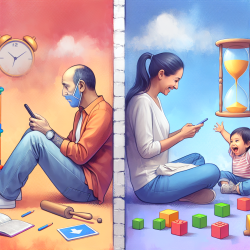Introduction
In the field of speech-language pathology, particularly when working with children diagnosed with Autism Spectrum Disorder (ASD), the importance of evidence-based practice cannot be overstated. Recent research by Linstead et al. (2017) provides valuable insights into how treatment intensity and duration can significantly influence outcomes across various developmental domains for children with ASD. This blog aims to distill these findings and provide actionable insights for practitioners seeking to optimize their therapeutic interventions.
Understanding the Study
The study, titled "An evaluation of the effects of intensity and duration on outcomes across treatment domains for children with autism spectrum disorder," involved 1,468 children aged 18 months to 12 years. It examined how treatment intensity (hours per week) and duration (months of treatment) impacted learning across eight domains: academic, adaptive, cognitive, executive function, language, motor, play, and social skills. The findings indicated that both intensity and duration are significant predictors of mastered learning objectives, with notable impacts in the academic and language domains.
Key Findings
- Intensity and Duration Matter: Both treatment intensity and duration were found to be significant predictors of learning outcomes. The academic and language domains showed the strongest response to these variables.
- Domain-Specific Impacts: The study revealed that different domains respond differently to treatment dosage. For instance, language skills benefit greatly from both high intensity and extended duration, whereas motor skills showed a more uniform response to treatment dosage.
- Implications for Practice: Practitioners should consider both the intensity and duration of therapy when designing treatment plans. For domains like language and academics, longer treatment durations may be more beneficial.
Practical Applications
For practitioners, these findings underscore the importance of tailoring treatment plans to the individual needs of each child, considering both the intensity and duration of therapy. Here are some practical steps to consider:
- Assess and Adjust: Regularly assess the child's progress across different domains and adjust the intensity and duration of therapy as needed to optimize outcomes.
- Focus on High-Impact Domains: Allocate more resources and time to domains that show stronger responses to treatment, such as language and academics.
- Long-Term Planning: For skills that require long-term development, such as executive function, consider a strategy that emphasizes duration over intensity.
Encouraging Further Research
While this study provides a robust framework for understanding the impact of treatment intensity and duration, it also highlights the need for further research. Future studies could explore the interaction between these variables and other factors such as age, gender, and specific behavioral challenges. By continuing to refine our understanding of these dynamics, we can better tailor interventions to meet the unique needs of each child.
To read the original research paper, please follow this link: An evaluation of the effects of intensity and duration on outcomes across treatment domains for children with autism spectrum disorder.










